| Far Side of the World:
Sterneck’s Sardine Tins
by Mike Bennighof, Ph.D.
March 2025
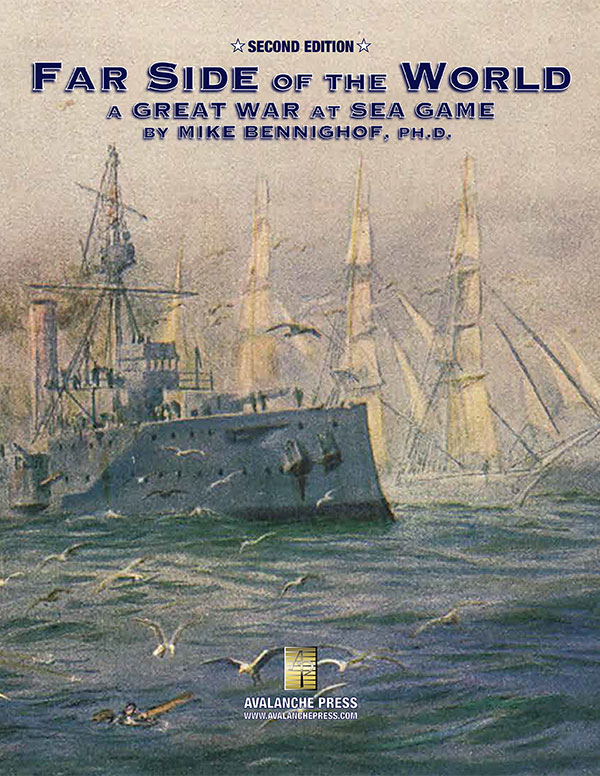 Austria-Hungary came very late to the table of European colonialism, so late that even the crumbs had been swept up. But the imperial government held a few boosters who sought the prestige of overseas colonies, with the parliament of Austrian half indifferent at best and that of the Hungarian half outright hostile to any such acquisitions. Austria-Hungary came very late to the table of European colonialism, so late that even the crumbs had been swept up. But the imperial government held a few boosters who sought the prestige of overseas colonies, with the parliament of Austrian half indifferent at best and that of the Hungarian half outright hostile to any such acquisitions.
Overseas trade through Trieste grew rapidly following the connection of the Adriatic port to the new rail system, and the Navy started to send individual ships on wide-ranging cruises to all parts of the globe. The most famous of these voyages, the round-the-world voyage of the screw frigate Novara, included a stop in the Nicobar Islands in the middle of the Bay of Bengal in 1858. The scientific team recommended claiming the islands as a penal colony; the central government, facing financial crisis, chose not to make the investment. The screw corvette Aurora returned in 1886, and this time the Austrians wanted a colony of their own, somewhere. Anywhere. They found that the British had already established their own rule, including a penal colony.
In 1877, the Austro-Hungarian consul in Hong Kong, Gustav Overbeck, purchased land rights in North Borneo (modern Sabah) and succeeded in swindling the Sultans of Brunei and Sulu into ceding him sovereignty over the region (by the time-honored method of providing a very different translation of a lease agreement than the English original). He then undertook a tour of Europe in the early 1880’s, offering his little kingdom to Italy, Germany, and Austria-Hungary for a price. The Austrians passed on the scam and Overbeck ended up selling his rather specious rights to the British.
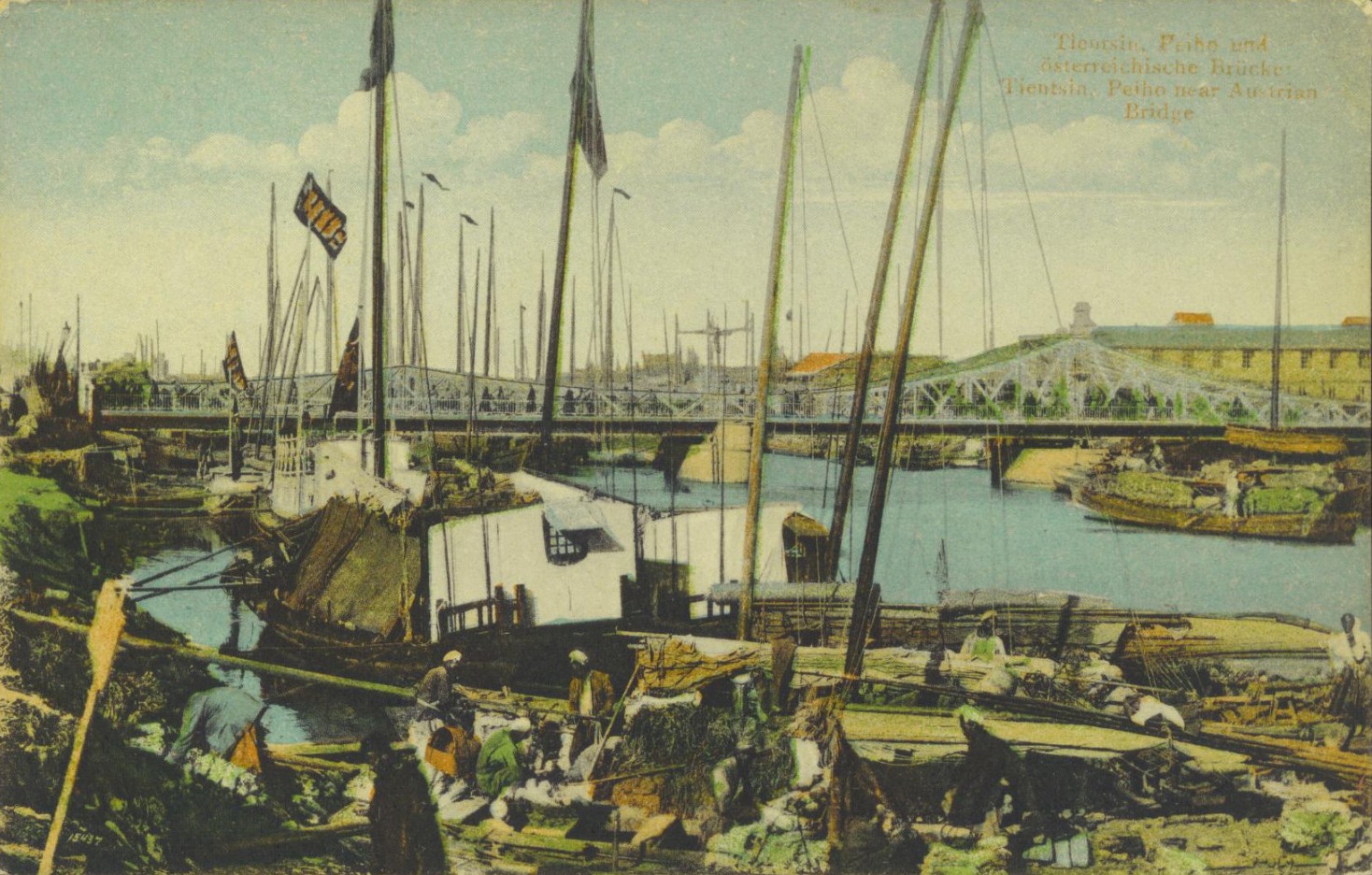
The revolving iron bridge over the Peiho River marked the most notable lasting achievement of the brief Austro-Hungarian rule in Tianjin.
Without a presence on the ground, the Imperial & Royal Navy usually kept a cruiser in Chinese waters through the remainder of the century; showing the flag was thought to help business interests. In 1892 the Navy for the first time sent out a modern warship rather than the elderly wooden ships that had previously shown the flag. Kaiserin Elisabeth, a new torpedo ram cruiser, carried Archduke Franz Ferdinand, then second in line to the throne, on his world tour. The old ships continued their service, now supplemented by modern cruisers. In 1900, when the so-called Boxer Rebellion broke out, the Imperial & Royal Navy had one warship in Chinese waters, the new small cruiser Zenta.
Three more warships soon joined her: Rear Admiral Rudolf Montecuccoli led the armored cruiser K.u.K. Maria Theresa, the torpedo ram cruiser Kaiserin Elisabeth and Zenta’s brand-new sister, Aspern. They brought with them 400 Austrian marines, 296 of whom joined the march on Peking but arrived too late to participate in the relief of the European delegations besieged there. Only a small detachment from Zenta took part in the fighting, but Montecuccoli’s ships did participate in the bombardments of Chinese coastal forts and established Austria-Hungary as one of the Great Powers with a voice in Chinese affairs.
That voice finally gave the Dual Monarchy a piece of ground on which to plant the split banner: a 266-acre concession in the heart of the North Chinese port city of Tianjin (Tientsin), one of eight such enclaves within the city. The Austro-Hungarian concession had a population of 30,000, all of whom were granted Austro-Hungarian citizenship (the only colonial holding in China where this was true). A council of local notables advised the consul, who governed the concession. Forty Austro-Hungarian Marines made up the garrison (the only such force in Tianjin), assisted by 80 Chinese policemen.
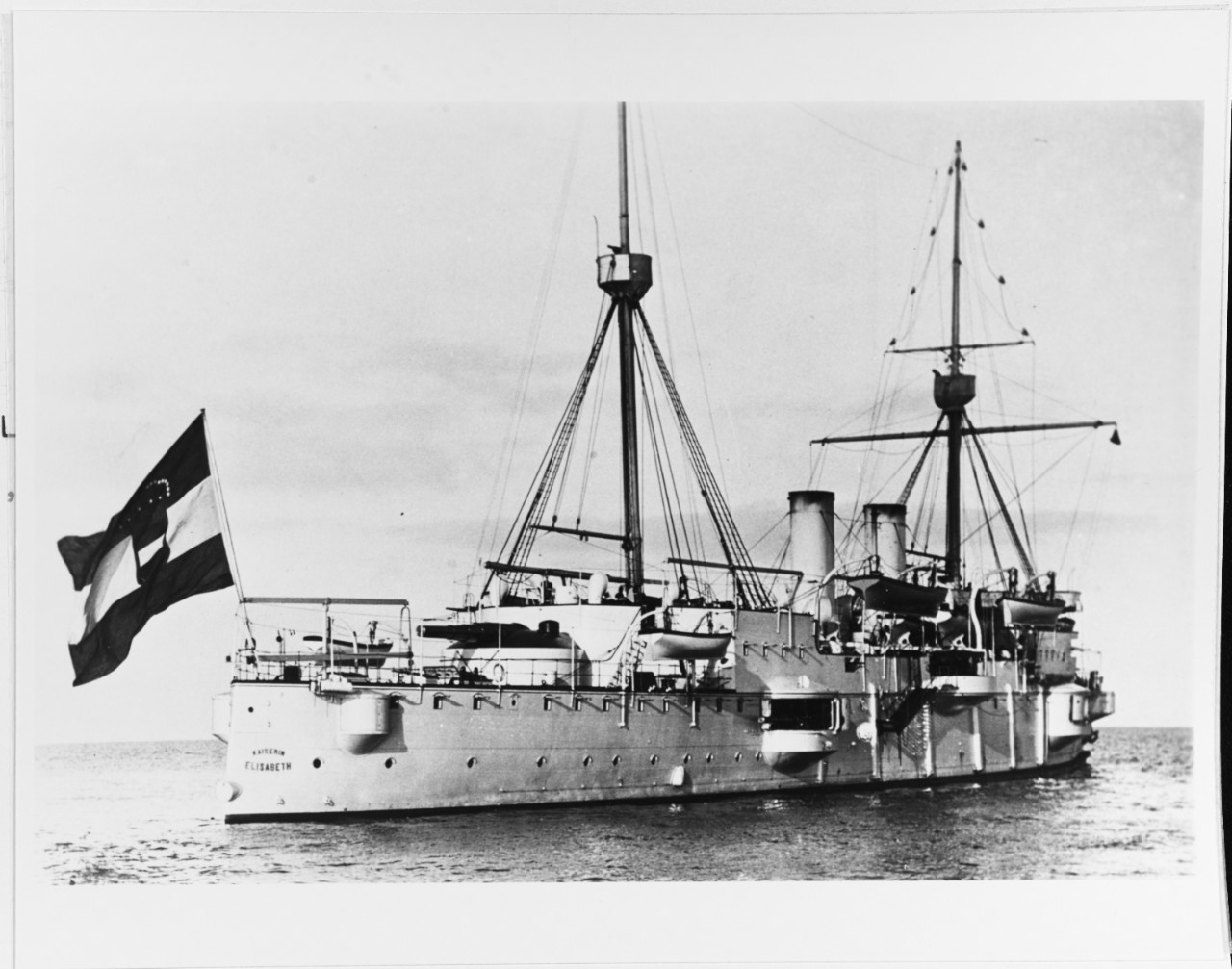
Kaiserin Elisabeth seen in 1892, at the start of Franz Ferdinand’s round-the-world cruise.
For several years the Austrians maintained two cruisers on station, dropping at times to one but never abandoning their presence. Though some of the less reality-bound politicians at home demanded that Austria-Hungary seize her own Chinese port, no one took these suggestions very seriously. The Imperial & Royal Navy worked out an agreement to use the new German facilities at Tsingtao, and stockpiled their own supplies of coal, food, and ammunition there.
In addition to the Boxer Rebellion intervention, Kaiserin Elisabeth did tours on the China Station in 1899-1900, 1904-1905, 1908-1910 and finally returning to the same duty in 1914. Her sister ship Kaiser Franz Josef I held the duty in 1905-1908 and 1910-1913.
The two cruisers had been laid down in 1888 as “torpedo ram cruisers,” each intended to lead a flotilla of torpedo boats into action. A third, authorized ship would be re-designed as the armored cruiser K.u.K. Maria Theresa. Each had two 240mm (9.4-inch) guns in fore and aft barbette mounts, six 150mm (5.9-inch) guns and a large number of small cannon (for use in the close-in fighting among the torpedo craft). They could make 19 knots when Kaiser Franz Josef I commissioned in 1890; Kaiserin Elisabeth, built at Pola Navy Yard, commissioned two years later.
They immediately proved unpopular with their crews, who labelled them “Sterneck’s Sardine Cans” in reference to Navy Minister Max von Sterneck, one of the heroes of the 1866 Battle of Lissa. The Imperial & Royal Navy abandoned the torpedo ram concept in 1897 with Sterneck’s retirement, which left the cruisers without a role in the battle fleet and therefore prime choices for the China Station.

Kaiserin Elisabeth as re-armed; seen in a Chinese port in 1910.
Beyond their poor accommodations, the ships had numerous other problems. The big guns proved too heavy for their 4,500-ton displacement at full load, and their Krupp-made hydraulic mounts could only elevate them to 13.5 degrees, limiting their range to 10,000 yards. The open barbette mounts had quickly become outdated, and the concept of mounting huge but slow-firing main guns on cruisers, seen as an inexpensive alternative to full-sized battleships, was refuted by the results of the 1894 Sino-Japanese War.
In 1905, Kaiser Franz Josef I went to Pola Navy Yard to have their big guns replaced by new-model Krupp 150mm (5.9-inch) guns in enclosed armored turrets. The other six guns of the same caliber (but a different, older model) were retained, but placed in similar mounts and moved to the main deck level, up from their lower-deck casemate mounts. When the work finished, she steamed to China to relieve Kaiserin Elisabeth, which returned to Pola Navy Yard for a similar modernization, though her new 150mm guns were mounted in shields rather than turrets. The Imperial & Royal Navy did not waste its precious funding on replacing their antiquated ram bows or aging engines, or upgrading their protection.
In late 1913, Kaiser Franz Josef I rotated home and Kaiserin Elisabeth returned to Chinese waters. The Navy Ministry considered leaving both cruisers at Tsingtao, as the Austrian Lloyd shipping line had opened a new Trieste-Shanghai route in 1912 and expected to see rapid growth in both passengers and cargo. They ultimately chose to leave but one cruiser on the China Station.
When Serbian terrorists murdered Archduke Franz Ferdinand in late June 1914, Austro-Hungarian reservists from across Asia, mostly sailors, began to report for duty at the Tianjin concession. From there, the consular staff helped them sneak across Chinese territory to the German colony at Tsingtao. Ultimately about 400 men made the journey.
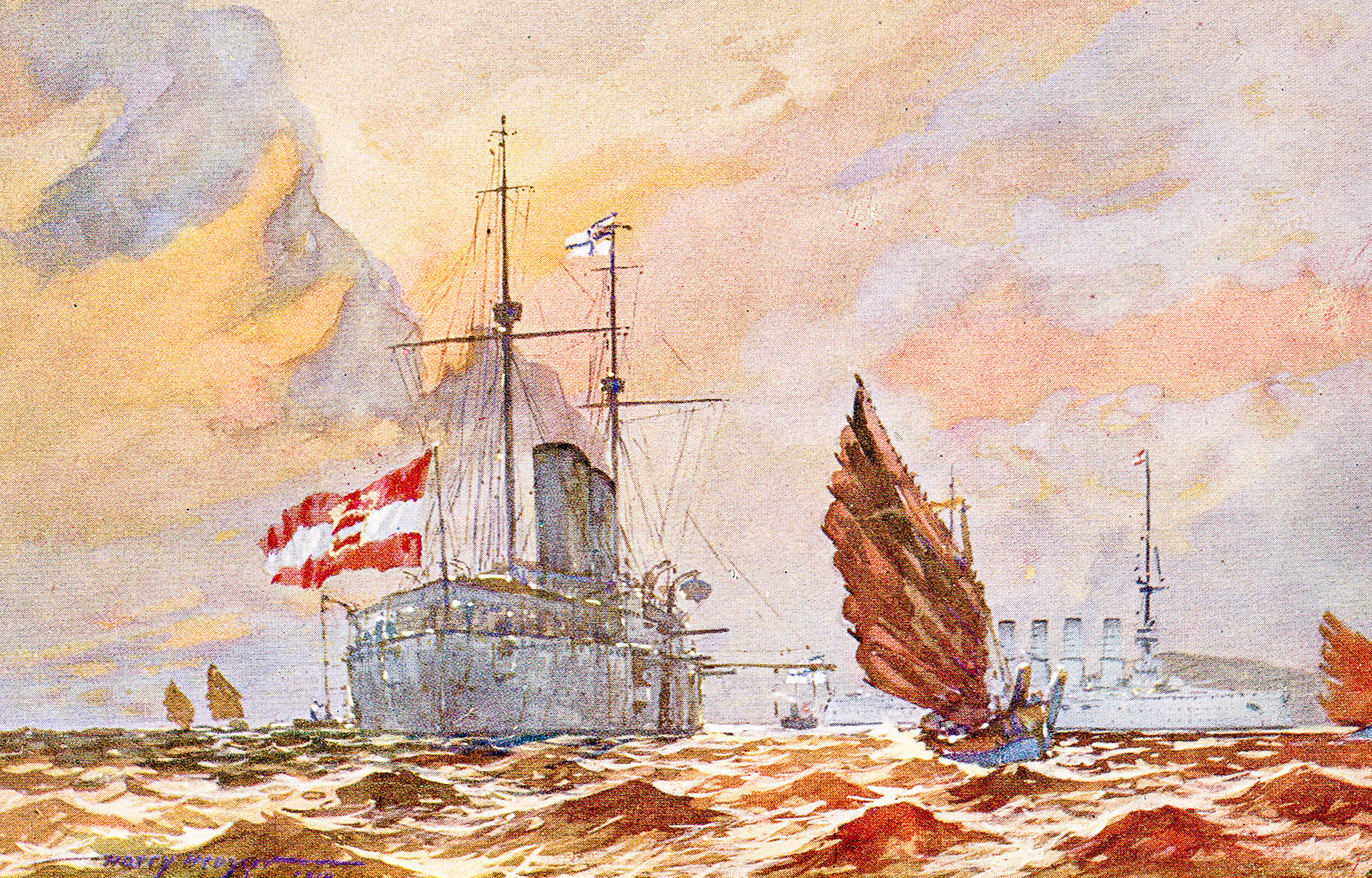
Kaiserin Elisabeth in Kiaochou Bay, by Alexander Kircher.
Kaiserin Elisabeth was at Tschifu in north China, having just completed a long courtesy voyage to Hong Kong and several Japanese ports. She remained there awaiting orders, which came on 21 July. Her commander, Linienschiffskapitän Richard Makoviz, wanted to join Maximilian von Spee’s German cruiser squadron lurking somewhere in the Pacific and take part in commerce raiding. She burned coal at a rapid rate and was very slow, and so his superiors vetoed that idea. Instead, the Navy command made arrangements with the Chinese to intern the ship in Shanghai and return the crew home.
German Kaiser Wilhelm II, informed of this move, made a personal appeal to the Austrian Kaiser Franz Josef. The cruiser, he insisted, was desperately needed to bolster the defenses of Tsingtao. After some harsh remarks to his aides about the state of German readiness, the old emperor agreed and the navy countermanded Makoviz’s orders. The ship would stay at Tsingtao.
At Tsingtao, the two newest 150mm guns went ashore as the Elisabeth battery, and fought throughout the siege. Most of her 47mm guns also went ashore, and her marines formed a small company that fought in the front lines. Another Austro-Hungarian company, formed from the merchant sailors collected at Tianjin, also saw action, and is often mis-identified in secondary histories of the siege as the cruiser’s crew. But Kaiserin Elisabeth remained operational. The ship remained in Kiaochou Bay performing shore bombardment in support of the German troops and her own marines until 2 November 1914, when she fired her last shells and the city stood on the brink of surrender. Makoviz took her to the deepest part of the bay, fired her boilers to full capacity and set off four torpedo warheads. The ship blew apart spectacularly; despite a number of attempts the wreckage has never been found.
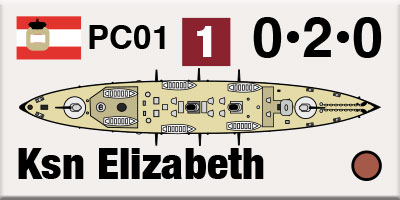
Kaiser Franz Josef I had a much more prosaic end. Stationed at Cattaro in southern Dalmatia, she served on coast-defense duties, participating in bombardments of Montenegrin targets in 1914 in 1915. Following the February 1918 mutiny among the crews at Cattaro, she was reduced to the status of barracks ship and allotted to the French after the war. While in French custody, she sank in a storm while anchored at Cattaro, and would be broken up afterwards.
The Austrian concession at Tianjin would be occupied by 400 Chinese police in August 1917; the diplomatic corps was sent home while the tiny garrison became prisoners of war. They lived out the rest of the war in comfort in Beijing, retaining their uniforms and weapons but no ammunition.
Both ships appear in Great War at Sea: Far Side of the World. Kaiserin Elisabeth is present on the China Station; Kaiser Franz Josef I may appear as an optional reinforcement. Neither is a very good fighting ship, but if you want to try to run down Allied merchant ships with them, you can give it a try.
Click here to join the Gold Club.
See your Gold Club Insider newsletter for ordering information.
Sign up for our newsletter right here. Your info will never be sold or transferred; we'll just use it to update you on new games and new offers.
Mike Bennighof is president of Avalanche Press and holds a doctorate in history from Emory University. A Fulbright Scholar and NASA Journalist in Space finalist, he has published a great many books, games and articles on historical subjects; people are saying that some of them are actually good.
He lives in Birmingham, Alabama with his wife and three children. He misses his lizard-hunting Iron Dog, Leopold.
Daily Content includes no AI-generated content or third-party ads. We work hard to keep it that way, and that’s a lot of work. You can help us keep things that way with your gift through this link right here.
|
